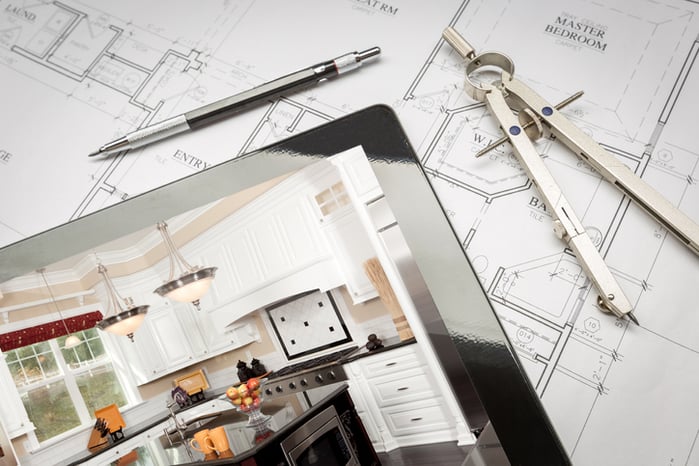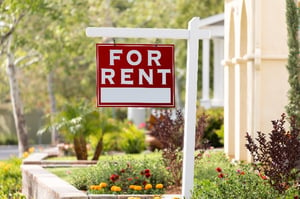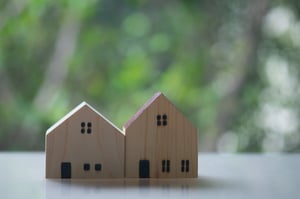If you’re looking for a way to make quick profits in real estate, house flipping just might be the way to go. To be sure, making money flipping houses isn’t as easy as they make it seem on TV.
House flipping requires a lot of hard work, expertise, and patience. But when you know how to do it, flipping houses can be a potentially lucrative short-term real estate investment.
What is house flipping?
Real estate investors who flip houses buy the property at a discount, make any needed repairs and renovations, and sell the property at a profit. In other words, house flipping follows the classic investment strategy of buying low and selling high.
Housing flipping can be a potentially profitable way to invest in real estate when there is more demand for homes than there is supply, as in many real estate markets today.
Most homebuyers don’t have the time, energy, money, or knowledge to find deals and do their own repairs. But, they may be more than willing to pay a good price for a home where all of the work has already been done.
Popular properties for flipping
Not every house is a good candidate for flipping. Popular properties that can be good for flipping usually fall into one of three general categories:
- The first option is older homes in need of repair. In today’s economy, there are homeowners who simply don’t have the money to make the necessary repairs to get top dollar for their homes. Real estate investors who have the capital can take advantage of opportunities like these.
- Short-sales are another good option for finding property to flip. Homeowners who have missed several mortgage payments and are in the process of getting foreclosed on sometimes try to sell short – or sell for less than the current mortgage balance – in order to avoid the embarrassment of foreclosure and a bad credit score.
- REO homes, which means “real estate owned” by the bank, is property that has already been foreclosed on. Because banks aren’t in the real estate investment business, they are often very motivated to sell at a below-market price so that they can get the property off of their balance sheet.
- Out-of-state owners and people who have inherited a home are another good source for finding properties to flip. Sometimes owners who live in a different state aren’t cut out to be long distance landlords, because they don’t understand how remote real estate investing works. People who inherit real estate may not want the house in the first place and may be very willing to sell for cheap to an investor who offers to close fast.

5 steps to flip a house
Flipping a house is a little bit different from buying a turnkey rental property. You need to understand the market trends to buy low, accurately estimate the cost of repairs and how long they will take, and predict the price you can sell at while still making a profit.
There are five steps to follow to flip a house:
1. Market research
Buying low and selling high is much easier said than done. In order to make a profit flipping a house, you need to choose a property that offers enough upside potential after the cost of repairs has been factored in.
Generally speaking, middle-income and working-class homes in 2, 3, and 4-star neighborhoods are the best places to find a house to flip.
2. Estimate repair and update costs
Successful house flippers focus on homes that need inexpensive cosmetic repairs such as paint and flooring, updated fixtures like sinks and faucets, and new stainless steel appliances. It’s much easier to estimate repair costs like these versus trying to fix structural problems like a cracked wall or foundation, which require the use of a licensed general contractor and pulling permits from the city.
Real estate investors who flip houses for a living use the 70% Rule to calculate the maximum offer price on a house being flipped. You’ll need to know the cost of repairs and the after repair value (ARV) to see if a deal makes sense. Then you can use this formula to determine the maximum offer price on a house that is being flipped:
- Maximum Offer Price = 70% of ARV – Repair Cost
If the ARV of a home you are considering flipping is $150,000 and the needed repairs are $15,000, the maximum offer price you could make is $90,000:
- $150,000 ARV x 70% = $105,000 - $15,000 Repair Cost = $90,000 Maximum Offer Price
3. Arrange financing
Two good options for paying for a house to flip is to use all cash or a short-term hard money loan. Traditional buy-and-hold real estate investors normally use leverage to increase the overall return on investment.
On the other hand, house flippers try to move in and out of a deal quickly and try not to accumulate debt or make interest payments that could eat into potential profits on the upside of the flip. Also, most conventional lenders won’t make a loan on a home that is being flipped, due to the perceived increased risk.
4. Network with contractors
Contractors, handymen, and material suppliers will usually give you better pricing when they know you’ll be sending a constant flow of business their way. By creating a network of trusted and cost-effective contractors, you’ll reduce the risk that the cost of repairs will be higher than expected.
One of the worst things that can happen when you are flipping a home is to have the purchase price plus the cost of repair exceed the fair market value of the house. If that happens, you’ll be flipping the home at a loss, something no real estate investor wants to do.
5. Buy a property to flip
After you’ve thoroughly analyzed the local real estate market and have located a property that would make a good flip, the next step is to put the property under contract. Because you’re making an offer at a below-market price, sellers will expect a purchase contract with very few contingencies and a fast close of escrow.
Have your team of contractors ready to begin making repairs the day escrow closes, because the quicker you get the updating done the faster you can sell the property and make some money.
How to maximize sales profits
One way to sell a house you are flipping is to an owner-occupant who will be happy to pay more for a nice home that is fully renovated and updated. To do that, you’ll probably have to list the home for sale on the local MLS and pay a real estate agent commission of 5% or 6% that will eat into the profits of the home you are flipping.
A good way to maximize your potential profits when you flip a home is to rent the home to a tenant. You’ll need to conduct thorough tenant screening, and “season” the tenant by making sure the rent is paid on time for several months.
After that, you can list the home on the Roofstock Marketplace and market the home you are flipping as a turnkey rental property to qualified real estate investors. Sales fees are about half of what you would pay compared to the MLS, and rental property investors may be willing to pay more for a home that is completely renovated and rented to good tenants.
Although selling this way will lengthen the time between buying and flipping the house, you’ll have rental income from the tenant to offset the cost of holding the property for a few extra months. Be sure to crunch the numbers using both scenarios to see if the money you will save by selling on Roofstock is better than selling on the MLS.
Where to get a loan to flip a house
Conventional 30-year mortgages are the loan of choice for buy-and-hold real estate investors, but long-term loans aren’t really designed for investors who want to flip homes. Instead, you’ll need to be more creative about finding money to flip a house.
Hard money
Hard money lenders specialize in providing capital to real estate investors looking for a short-term loan to flip a home. Interest rates and fees are higher, with loan-to-value (LTV) ratios of 70% or less.
Although the payments are higher, house flippers move in and out of deals pretty quickly, so the actual carrying costs are low. Plus, many hard money lenders will allow you to include the cost of repairs in the hard money loan.
Private lending
Private money lenders are people who understand that not every real estate investment is suitable for a traditional mortgage. Private lenders raise money from passive real estate investors who are interested in investing in debt instead of equity.
Fees and interest rates will be higher, but because private lenders are able to think outside of the box, they can be another good source for finding money to flip a house.
Joint ventures
Another good option for finding money to flip a house is to form your own joint venture under an LLC. Passive partners in the LLC contribute their capital, while you do the active work of finding and flipping a house. There are several advantages to having an LLC, such as limited liability and pass-through taxation.
But the biggest benefit to using an LLC to flip a house is that you can share the potential profits any number of ways, depending on how the operating agreement is written and what the partners agree on. For example, even if your partners contribute most of the capital, you could be compensated with a greater share of the profits because you are the one doing all of the work.
Top house flipping mistakes to avoid
While flipping a house can be potentially very lucrative, there are some potential risks to be aware of as well. These are some of the common mistakes that beginning house flippers make:
- Lack of funds due to repairs costs being higher than anticipated or overestimating the ARV of the home being flipped.
- Underestimating the time it takes to find, update, and flip a house, especially if you are trying to do everything on your own.
- Not having a qualified team of trusted, cost-effective contractors and handymen that can help your repair costs come in at budget.
- Jumping at the first opportunity that comes along instead of taking the time to research and analyze the local real estate market to identify good houses to flip in middle-income and working-class neighborhoods.
Final thoughts on flipping homes
If you’re thinking about starting to flip houses, it’s best to play it safe and err on the side of caution. Start with a house that only needs cosmetic repairs, in a market that you know extremely well.
Even if you only make a small profit on your first flip, you’ll be gaining valuable experience and a track record of success that will help to raise money from other investors to fund your house-flipping business.









